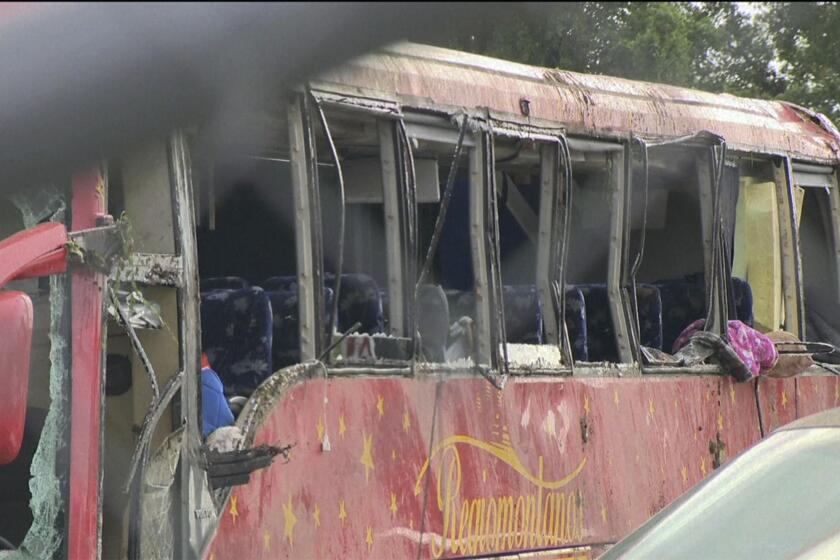Temptations of Pennsylvania Dutch Country
Neat white farmhouses, barns and silos scatter across the gentle countryside of green and furrowed fields set off by well-kept fencing. The effect, both visually and emotionally, is that of a Norman Rockwell painting, or perhaps a perfect calendar photograph taken to show the beauty and tranquillity of southeastern Pennsylvania.
Even after being thoroughly briefed, any visitor to this Pennsylvania Dutch farm country will find the 20th-Century anomalies almost overpowering: farms completely without electric power; perhaps a telephone beneath a shed in a field 50 yards from the farmhouse; farming equipment run by waterwheel-and-wires power; seeding or tilling soil behind a team of mules; village streets lined solid with gray or black carriages, and another 150 carriages cramming the barnyard at an Amish wedding.
The name Pennsylvania Dutch conjures up images of a peace-loving people given to hard work, old-fashioned ways, orderliness, plain dress, selfless brotherhood, tight family ties and a simple devotion to their religious faith. It’s all true.
It was 1693 when a Swiss Mennonite bishop named Amman decided that the Mennonite church was losing its purity of purpose, so he split away and began the Amish group. Both “churches” (the Amish worship in a neighbor’s house or barn) are still totally devoted to Christian faith and tenets, yet the Amish are more private socially and obdurate to the temptations of technology.
Old Order (more conservative) Amish and Mennonite groups also insist on a maximum of eight years schooling for their children in their own one-room schoolhouses (upheld by a 7-0 U.S. Supreme Court decision in 1972), refuse to do military service and accept no Social Security benefits.
They strongly favor their shortened school system, feeling that this is enough to give a child the basic “three Rs,” which is sufficient for a life spent in farming, carpentry-woodworking or handicrafts.
The older orders have no real fear of modern technology (autos, TV, electricity and such). They are only concerned with its effects on the chosen simplicity of their lives. Another interesting anomaly is that a young person may drive a car until he or she is re-baptized. Then it’s back to the “courting buggy” (open) or the closed and very private regular Amish (gray) or Mennonite (black) buggy after marriage.
As for that telephone stuck out in a meadow away from the house, it’s a small concession allowed by Amish bishops for possible emergencies. If it rings, the yard dogs will bark to alert the family.
How long/how much? Spend anywhere from two to four days exploring the numerous towns and villages near here. Lodging costs are moderate, dining very inexpensive.
Getting settled in: With more than 100 B&Bs; available in this general area, the Churchtown Inn, a marvelous fieldstone Federal-Colonial mansion built in 1735, is surely one of the most fetching. Innkeepers Hermine and Stuart Smith and Jim Kent have furnished the place with antiques and Victorian Era collectibles, and an aura of warmth and well-being wafts about each of the nine bedrooms.
A five-course breakfast is included in room prices, and a Saturday night dinner with an Amish farm family is but one of the many special events (square dancing, musical evenings, holiday week-ends) that the Stuarts (he is a former choral director) put together. Views over the farm country surrounding the hamlet of Churchtown are gorgeous.
The King’s Cottage in Lancaster is hardly that, being a revivalist Spanish mansion furnished with antiques, 18th-Century reproductions, a touch of Art Deco in the fireplace and an Early American dining room. Somehow it all comes together into a five-room B&B; that is in the National Register of Historic Places.
Full breakfasts of fresh juices, newly ground coffee, homemade breads, French toast, eggs and sausage from the town’s farmers’ market will launch any day properly.
Jonde Lane Farm, operated as a working farm and B&B; by the Mennonite Nissley family (John, Elaine and four teen-agers) is something else again. The 1859 brick farmhouse sits on a 100-acre dairy and poultry farm, and guests are encouraged to take part in any chores (canning, silking and husking corn, feeding chicks, gathering eggs) they feel up to. There’s a pony to ride, plus lots of friendly dogs, cats and kittens around.
Jonde Lane is the perfect place for family farm holidays (one to 10 days), and they come from France, Germany, Japan, China and other countries. Just keep in mind that the four bedrooms are very modest, the baths shared.
A hot farm breakfast is served in the kitchen at a table that spreads to accommodate 20, usually something like ham-and-egg casserole, pancakes, shoofly pie and other homemade farm fare. There’s no Sunday check-in or breakfast served, but guests are invited to join the family at their church for Mennonite services.
CrestHil by Hilton is new and very much the traditional Hilton operation, complete with indoor pool, fitness center and cable TV, plus bedroom coffee and tea equipment. It’s on the edge of Lancaster, and there’s no charge for children of any age in parents’ room.
Regional food and drink: Meats, produce and dairy products in Lancaster County are as fresh and appealing as you will find anywhere, but don’t expect terribly imaginative dishes or much seasoning beyond salt and pepper in countryside Pennsylvania Dutch restaurants. Just about everyone, however, is carried away by the variety of desserts.
So plan on lots of chicken pot pie, roast beef and ham, casseroles and plenty of fresh vegetables. The dried corn was something new for us and very good tasty. Those desserts could be the molasses-based shoofly pie, snickerdoodle cookies of cinnamon and sugar or whoopie pies of chocolate, oatmeal or pumpkin.
Dining well: Groff’s Farm Restaurant (650 Pinkerton Road, Mount Joy) is run by one of the region’s premier characters and gurus of Pennsylvania Dutch food. Betty Groff is a 10th-generation Mennonite who has written a number of cookbooks, walks about her 1756 farmhouse restaurant constantly regaling guests with stories going back beyond the flood of 1889, and, when the spirit moves her, hauls out her trumpet for a solo or two.
Betty’s menu highlights such as chicken Stoltfus (roasted chunks in a cream sauce on a bed of buttered pastry), homemade noodles with brown butter, flounder stuffed with crab meat and prime rib. Luncheon main dishes are in the $7 range, $14 at dinner.
Market Fare (25 W. King St.) is right across from the town’s ancient Central Market, but the menu ventures out across America, from Cajun shrimp to veal medallions with pine nuts and prosciutto to 10 very imaginative pastas. Plan on main dishes with salad and vegetables running in the $13-$17 range, pastas with salad about $11.
Market Fare sits in an arcade on the site of a general store built in 1821, and is very colorful inside and out.
Few visitors to this region, usually in squadrons of tour buses, miss a stop at the Plain & Fancy Farm (Route 340, near Bird-in-Hand village) for an endless Pennsylvania Dutch meal. No menus, just sit down at communal tables in a gigantic barnlike building and they start bringing food.
Get ready for sweet-and-sour relishes, three kinds of meat, chicken pot pie, seasonal vegetables, dried corn, three kinds of desserts, coffee, tea, milk, lemonade or hot chocolate. This endless meal of simple farm food will set you back $12.75 per, which makes the register really ring when the hall is filled to its 850-seat capacity.
Going first-class: Windows (16 W. King St., Lancaster) is an absolutely stunning French restaurant with three open floors enclosed on one side by windows looking out on a small park. The modern decor is mostly soothing green, including a small but delightful green marble bar, with lots of gleaming brass and huge arrangements of fresh flowers everywhere.
Try the quail stuffed with cornbread, sausage and sage at $19.95; veal sweetbreads dusted with hazelnuts for the same price, or grilled Black Angus tenderloin in a Bernaise sauce for $24.75. Windows is the region’s premier dining spot, and would do credit to any major city.
On your own: For a better understanding of the Amish and Mennonite people, their history, beliefs, everyday life and handicrafts, head straight for The People’s Place (Main Street, Intercourse, Pa.), a heritage center unlike any other we’ve seen. View the superb 25-minute “Who Are the Amish?” documentary for a real insight into how they have achieved a “stillness of spirit.”
Then visit the upstairs Quilt Museum, where magnificent original Amish quilts are mounted and lighted like Old Masters. Downstairs are several lovely and low-key shops selling handmade furniture reproductions, pottery, quilts, books and other handicrafts. The People’s Place simply cannot be missed.
A short stop at Lancaster’s Central Market, which has been on the same site since the 1730s, gives one a close-up view of more than 80 stalls manned by Amish, Mennonite and other friendly folks offering their fresh produce, smoked sausages, cheeses, pastries and handicrafts. All of the Old Order women wear lace-like “prayer veiling” caps and severely plain dresses and aprons.
Lancaster County has about 15 museums (clocks, steam locomotives, old farm implements and such), plus numerous historic homes open to the public. And shoppers will delight in the county’s 350 outlet stores, most of them grouped in malls in and around the town of Lancaster.
Kitchen Kettle Village (between Lancaster and Intercourse) is a very pretty collection of shops where one may watch basket weavers, bakers, woodworkers and other craftsmen turning out just about anything having to do with country living.
Have a go at the Jam and Relish Kitchen, or pick up an absolutely huge shoofly pie at the Bake Shop for $4.50. The sights and heavenly aromas make the village a very difficult place to leave.
GUIDEBOOK
Pennsylvania Amish Country
Getting here: Fly USAir to Lancaster, Pa. An advance-purchase, round-trip ticket will cost $358 or $398, depending on the day flown, if purchased prior to June 30. It is then good through the fall. Or you can fly to Philadelphia and take Amtrak the 64 miles to Lancaster for $11 one way (children half-price) in just over an hour.
Fast facts: Best visiting time starts in May, with September-October the biggest months, thanks to fall foliage and the harvest.
Where to stay: Churchtown Inn (Route 23, Churchtown, $85-$95 B&B; double, suites $125); The King’s Cottage (1049 E. King St., Lancaster, $85-$105 B&B; double); Jonde Lane Farm (1103 Auction Road, Manheim, $40 double B&B;, children $5); CrestHil by Hilton (101 Granite Run Drive, Lancaster, $80-$90 double).
For more information: Call the Lancaster County Visitors Bureau toll-free at (800) 735-2629, or write (501 Greenfield Road, Lancaster, Pa. 17601) for a 28-page color magazine on Pennsylvania Dutch country, including maps, sights, accommodations and a calendar of upcoming events.
More to Read
Sign up for Essential California
The most important California stories and recommendations in your inbox every morning.
You may occasionally receive promotional content from the Los Angeles Times.






